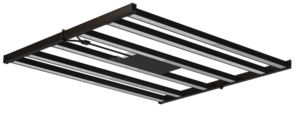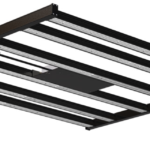Best LED Grow Lights by Hydroponics Gardening Tips
Different types of artificial light sources including LED grow lights, fluorescent lamps, high pressure sodium bulbs and metal halide lighting systems are used in hydroponic culture systems. Since LEDs (light emitting diodes) became popular among indoor farmers, many low-quality brands of these lights have been introduced to the market. The recently published Review of the BEST LED grow lights helps consumers weed out the expensive yet low-quality grow lamps from the high-quality systems that have proven to support plant growth under both vegetative and flowering/blooming phases. Because providing light with the correct wavelength and intensity is vital for efficient photosynthesis, using a good grow light system is crucial for successful hydroponics farming.
Pros and Cons of LED Grow Lights Explained:
Benefits and limitations of LED grow light systems; In addition to being the smallest, lightest, and the least space occupying, they are also the most energy efficient type of grow light. Their lifetime, typically spanning 50,000 100,000 hours (up to 15 years), is also the longest lifespan among different light sources.
The main disadvantage of LED bulbs is their relatively high purchasing cost. For example, a 1000 watt LED system will cost as much as 3 times the cost of a 1000 watt Metal Halide (MH) plus High Pressure Sodium (HPS) grow light system. However, because LEDs produce the most lumens of light per watt, their impact on the monthly electricity bill is minimal. Its not uncommon to see people reporting savings of as much as $40 on the monthly electric bill, after switching from HPS grow lights to LED. Therefore, in the long run, using LEDs will be the cheaper option in spite of the relatively high initial investment.
Related Posts
Filed under: LED Grow Lights








